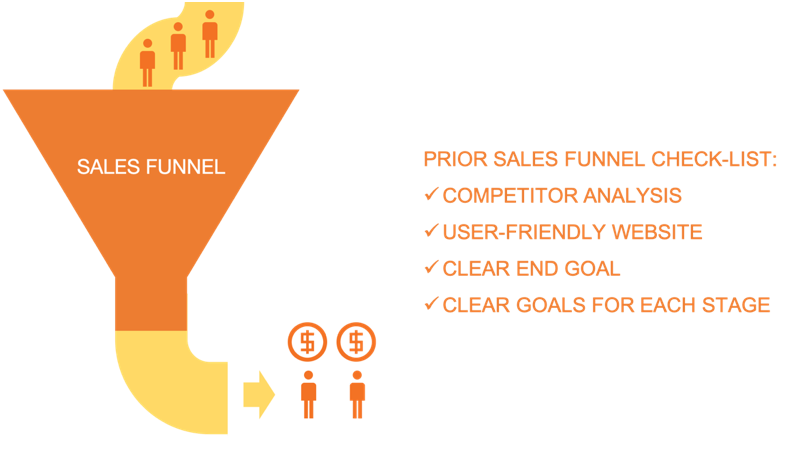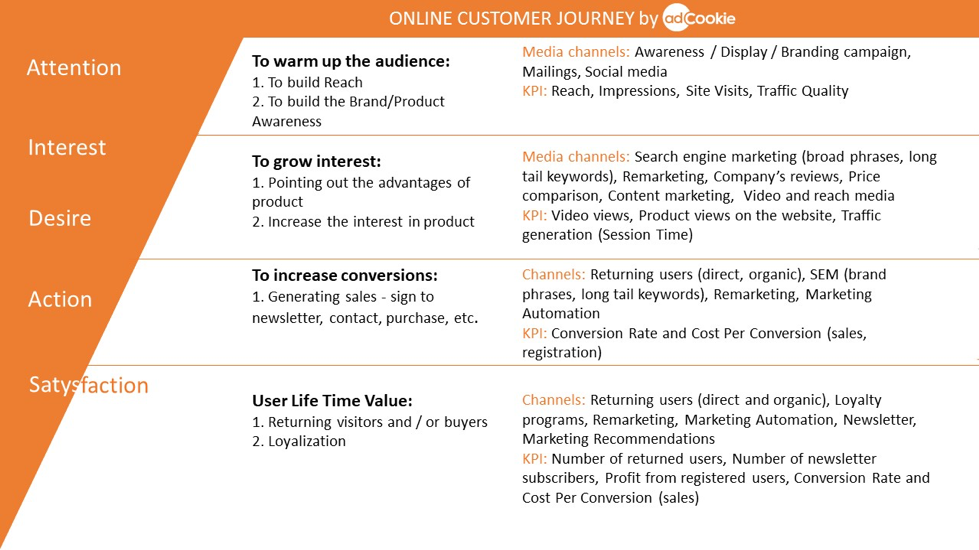How to Build a Powerful Sales Funnel

How to Build a Powerful Sales Funnel
Contributed ContentCreating an effective sales funnel requires a well thought out strategy that includes analyzing your competitors, setting achievable goals, and tracking the funnel's performance through KPIs.
As a digital account manager at adCookie, I’ve seen how hard it is to increase sales, not to mention doing so efficiently. In fact, 75% of businesses are trying to improve overall sales while also improving sales efficiency.
Sales funnels are one of the best strategies to accomplish this because they’re effective during any stage of the product life cycle. Additionally, they help identify leakages where customers drop out at one point of acquisition or another.
We offer the majority of new brands that come to us tailored media plans based on the sales funnel model. This allows them to establish a cold target audience and drive sales at the same time.
This article describes the groundwork you need to lay before developing a sales funnel, as well what to do at each stage of the funnel.
Consider Your Goals Before Setting Up a Sales Funnel
A sales funnel is a marketing model built around an online customer journey. It narrows down large customer pools through different types of promotion and advertising.
Most website visitors aren’t prepared to make a purchase. But, by engaging them in the sales funnel, you can influence their decision and persuade them to make a purchase.
Before implementing your sales funnel, you’ll need to analyze your competition, create a user-friendly website, identify a clear end goal, and outline how you'll measure progress.

Paying close attention to these four factors will help you make sure your sales funnel delivers the results you need.
1. Competitor Analysis
A thorough competitor analysis requires you to define your unique selling proposition, understand your strengths, and articulate why you’re better than other brands in your category.
This information will help you adjust your positioning.
2. A Well-Built Website
You should also analyze your current website condition. A poorly built website with complicated or illogical user journeys can drag down even the best promotional strategy.
A well-optimized website will help you stay visible on search engine results pages and help guide website visitors through the different stages of the conversion funnel.
The "15 Second Rule" says that if potential customers can find necessary information within the first 15 seconds of being on your website, then they’ll stay on your page longer.
3. A Clear End-Goal
What’s the final objective of your sales funnel? To understand this, you should consider your business model, previous marketing activities, relationships with your audience, and whether you sell a product or a service.
Based on these variables, you can identify KPIs that suit you (e.g., number of subscribers, sales, upsells). These indicators should be specific and measurable so you can observe their impact.
4. Accurate Measurements
Define your KPIs for each stage of the sales funnel using the SMART approach (specific, measurable, achievable, relevant, time). This method will reveal the underlying logic of each stage and help you identify what you want to accomplish.
Start by setting a specific goal you want to accomplish.
Then, make sure that it’s measurable – set metrics that will tell you if you meet your goal.
Include possible methods to make it more achievable, and double-check that it’s relevant to your brand.
Finally, choose a period of time for each stage of the funnel to maximize efficiency.
Know How to Interact With Potential Customers During Each Step of the Conversion Funnel
You should adjust how you interact with customers depending on where they are in the conversion funnel.
For example, if a customer is in the "attention" stage, you should focus your efforts on how to reach them and build brand awareness. If a customer is in the "satisfaction" stage, you should focus your efforts on making them return to your business as a loyal customer.

There are different KPIs for each of these stages that will help you measure progress and make sure you're staying on track to achieve your goals.
1. Attract the Audience’s Attention
First, you need to let people know about your product. Concentrate on awareness and branding campaigns and be very active on social media. Depending on your audience, this step could have different objectives:
- Cold Audience: Have they heard about your product/service?
If your audience has never heard of your product, you have to inform them about both your product and your brand. Videos can be great tools to build trust with a cold audience.
- Warm Audience: Are people familiar with your company?
If your audience is already familiar with your brand from previous marketing activities, you can concentrate more on your product and its features.
- Customers: Have they bought anything from you already?
This final category is made up of your current customers. They know your brand and are eager to buy it. The sales funnel will now help you upsell them or drive repeated purchases.
KPIs to track: Reach, Impressions, Site Visits, Traffic Quality
2. Know the Audience’s Interests
It's important to know what your audience is interested in so that once they've heard about you, you can tell them more about your product’s advantages. This will make them more interested in what you’re offering, depending on their motivation.
You can accomplish this via search engine advertising, remarketing on people collected in the “Attention” stage, posting engaging videos and content on social media.
KPIs to track: Video Views, Website Traffic (session time), Engagement Rate
3. Include a Compelling Call-to-Action
Now you can persuade prospects gathered in the “Interest/Desire” stage to become real customers using call-to-action advertising.
Additionally, concentrate on remarketing and cost per sale models.
If you have any special offers (e.g., free trial, free delivery, discounts), this is the best time to make them.
KPIs to track: Conversion Rate and Cost Per Conversion
4. Follow up With Customers to Ensure Satisfaction
Staying in touch with your customers is vital, so don’t hesitate to encourage upselling or repeated purchases. Keep using remarketing and maybe even start sending our newsletters. Loyalty programs also build strong bonds with customers.
KPIs to track: Number of returned users, number of newsletter subscribers, profit from registered users, conversion rate and cost per conversion
Building a Sales Funnel Can Benefit Your Business
If you’re ready to implement sales funnels in your business, make sure you check competitors’ activities, have a user-friendly landing page, identify a measurable final goal, and keep track of KPIs rather than vanity metrics.
Remember that the first stage should have the most customers and that you may need to adjust the stages of the funnel to your needs and process.
If you're still not sure how to optimize your conversation funnel and strategy, consider reaching out to one of the top business consulting firms with experience in your industry.
